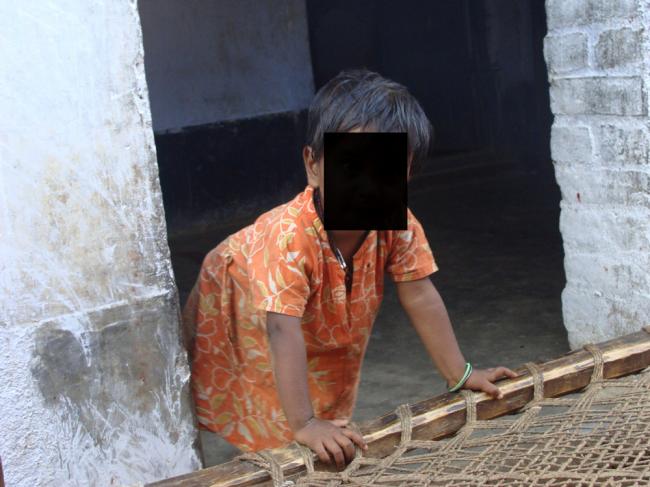30 Sep 2013, 08:05 am Print

In India’s shining IT city Bangalore, 12-year-old Gaurav is united in misfortune with his mother Seema because both of them are battling HIV infection.
In this city of glitzy shopping malls and global software companies, the poor family has to depend on donations for Gaurav’s Second Line of treatment against HIV but it is inadequate and one wonders how long they could fight on for survival.
Gaurav had suffered nine attacks of tuberculosis and had several other opportunistic infections, says Seema deposing before one of the National Commission for Protection of Child Rights (NCPCR) public hearings. The latter has come out with a report this year narrating the plight of India’s HIV affected children.
“Our most pressing concern is access to the government ART (Anti Retroviral Treatment) programme. Gaurav began on ART before NACO (National AIDS Control Organisation) rolled out the free ART programme,” says Seema, mother of Gaurav.
“Since he developed resistance towards First Line of ART, he had to start with the Second Line of treatment, which at that point of time was not provided free by the government. However, even that didn’t work for him. He needed to be on alternative ART,” says Seema.
The NCPCR directed the Karnataka State AIDS Prevention Society (KSAPS) to intervene, and consult with Gaurav’s doctor and develop a treatment plan for him.
Extra nutritional support was also recommended for him. The jury directed to register Gaurav with CWC (Child Welfare Committee) and seek the assistance of the Karnataka Commission for Protection of Child Rights.
During the hearing, KSAPS committed to give Gaurav support for his CD 4 testing to track the progression of HIV infection and disease.
Nevertheless, it was found later by NCPCR that nothing tangible has happened as a result of the public hearing.
Gaurav has neither been integrated into the government ART programme nor has received any nutritional support. The only support he receives is from Milana, an NGO that reaches out to HIV positive women.
Gaurav’s mother Seema was informed by the CWC that only children with institutional support qualify for CWC membership while Milana is no more than a network.
Thousands of HIV affected children in India live in utter despair with no institutional help or effort to address their plight, says the NCPCR which recently came out with a report based on public hearings over two years in six high prevalence states of Tamil Nadu, Karnataka, Maharashtra, Andhra Pradesh, Manipur and Delhi.
“It is estimated that there are 100,000 children [in India] in need of treatment for HIV and AIDS. They continue to live precariously in many parts of the country where they lack access to health care, adequate treatment of the infection and face discrimination, exclusion and isolation,” says NCPCR chairperson Shantha Sinha.
According to UNICEF, an estimated 110,000 children below the age of 15 are living with HIV in India and 21,000 children are infected every year through parent-to-child transmission. Most children are infected with the virus while still in the womb, during birth or while breastfeeding.
A small proportion is also infected by unsafe injections and blood transfusions.
The National Pediatric Antiretroviral Treatment Initiative was launched in 2006 in India, but despite high promises and schemes, HIV affected children of India live in absolute hopelessness.
In Chennai, the NCPCR team came across children like Mukesh, Rani and Satish living at Selva Indra Palani (SIP) Memorial Shelter Home in uncertainty.
The home shelters 40 other children affected by HIV. The children there need educational and nutritional support as well as a permanent shelter.
SIP is not getting a permanent shelter since the house has both HIV-positive and negative children, which, according to some officials, increases the risk of transmission.
The shelter home does not have a FIT institution status (Fit Institution Certificate is required for running juvenile homes) either, as factors such as space, lack of playground etc. pose hindrances. It is not under the net of CWC (Child Welfare Committee) either.
Noori, the founder and in-charge of the home, pays Rs 12,000 per month as rent and refuses to separate the children (HIV positive and negative) , many of whom are siblings. She herself is HIV-positive and a transgender.
“We directed the district administration after the hearing panel to provide assistance to these children and to look into the possibility of providing a permanent shelter to the home,” says Gunjan Wadhwa, research and policy analyst at NCPCR.
According to Ivonne Camaroni, head, HIV section in Unicef India, the main challenge in improving the lot of the children with HIV is combating social stigma and discrimination.
“They are discriminated by their own families and the healthcare providers. Basic service is limited to them. They are denied education, nutrition, legal assistance and social protection,” he says.
Camaroni points out that though treatment in India is free of cost identifying the HIV children is difficult.
“They come late for treatment. Many of them die early. There is no strong mechanism to follow the recommendations of bodies like NCPCR,” says Camaroni.
NCPCR has come out with several issue-based recommendations for improving the lot of the children with HIV.
Ironically, NACO which is supposed to spread awareness about HIV/AIDS through the media, declined to respond to repeated attempts to get its views on the various findings of NCPCR.
- HIV a ‘critical health concern’ amongst people who use drugs in Thailand
- Australia authorises MDMA, magic mushrooms use, but who can access them
- Repealing laws targeting people living with HIV/AIDS saves lives
- Gamechanger HIV injection rolls out in South Africa and Brazil
- UN urges ‘global solidarity, shared responsibility’ against pandemics, marking World AIDS Day






